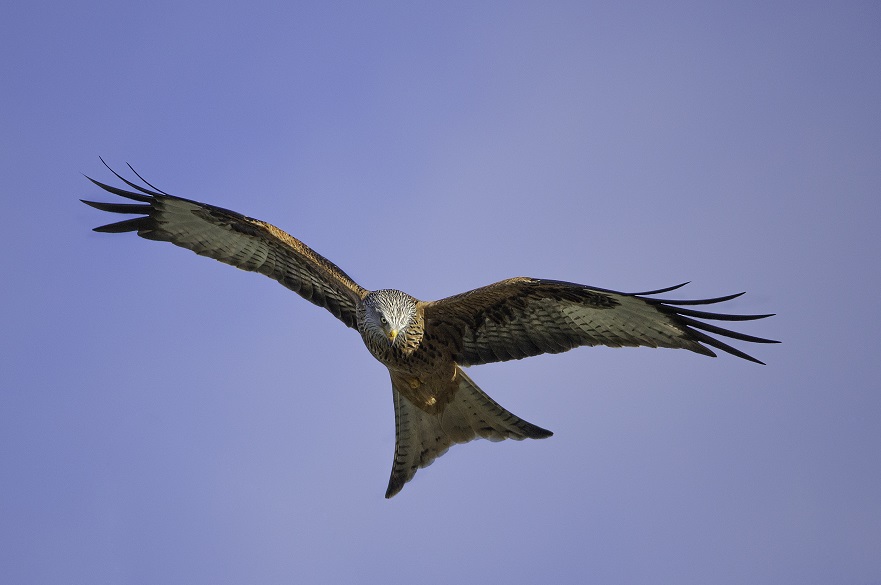Expert blog: A short history of our relationship with raptors
By Dr Esther Kettel, lecturer in ecology and conservation, School of Animal, Rural and Environmental Sciences
Published on 17 June 2022
Categories: Press office; Research; School of Animal, Rural and Environmental Sciences;

Raptors, or birds of prey, have long been associated with humans. However, our relationship with these predators of the skies is not a straightforward one.
Our relationship with raptors began with falconry and cave art provides evidence that this relationship dates back to C.8000BC. But this was not just a practical relationship. Falconry was traditionally considered a marker of high social status, wealth and royalty, and some people were even buried with their birds. Today, we might associate falconry with a ‘falconry experience’ we came across on Groupon. However, these birds are still highly prized, particularly in Middle Eastern countries - so much so that you might even have the privilege of sitting next to one on your next plane journey.
The eggs of raptors have also been sought after for many years. In the 19th Century bird eggs were collected for scientific purposes. By the 20th Century, egg collecting was regarded as more of a pastime and there are stories of some collectors going to extreme lengths to collect eggs. Egg collecting put pressure on the breeding success of many raptors, particularly as most species are slow to reach reproduction age.
Whilst some species are admired, others have been the subject of persecution. Red kites, for example, are primarily scavengers that were historically found in urban areas in abundance. However, in the 16th Century they were widely regarded as vermin. With this vermin status came killing to reduce populations. This killing worked. So much so that red kites became extinct in England and Scotland by the late 1800s, with only a handful left in Wales.
Persecution of raptors mainly exists when the species predates on other species that hold value, such as livestock, game, or domestic animals. For example, some pigeon racers believe that predation by some raptors on their pigeons is so high it threatens the future of the hobby. In the late 1950s a petition by pigeon racers led to an enquiry on the population status and control of peregrines and sparrowhawks. The results of this enquiry were far from expected. In fact, it was found that raptor numbers were dangerously low. Peregrines and sparrowhawks were on the brink of extinction in the UK. The cause was later linked to the use of DDT as a pesticide, which caused the thinning of eggshells and thus reduced reproductive success. Ironically, the egg collections that once contributed to declines helped to identify the cause of an even more serious threat.
Persecution of raptors is not confined to the history books, and persecution is thought to be the main threat to some species today. The illegal killing of hen harriers in the British uplands is the preliminary cause of population declines of the species. In fact, whilst there is thought to be enough habitat to support 300 pairs of hen harriers in England, very few successfully breed annually, with only 24 pairs successfully breeding in 2021. Buzzards, red kites, goshawks, golden eagles and others are also persecuted and in 2020 there were 137 confirmed persecution incidences across the UK.
Whilst some people come into conflict with raptors, others still admire them, and some species have been part of huge conservation efforts. White-tailed eagles were first reintroduced in east Scotland in 1975 after being persecuted to extinction. In 2013, they successfully bred in the area for the first time in 200 years. Following success in Scotland, reintroduction efforts have been carried out in parts of England since 2019. Perhaps the most successful conservation story in the UK, though, is the reintroduction of red kites across England and Scotland. First reintroduced in 1989, their population size is increasing and their distribution is expanding. In fact, red kites have come full circle and they are increasingly found in urban areas once again. This time, some people are welcoming them with open arms, even leaving meat out for them in their gardens.
Red kites aren’t the only species to be welcomed in our towns and cities. Some species, like peregrines and other bird-eating raptors are thought to thrive in urban areas, making use of artificial lighting, tall buildings that ‘mimic’ high cliff faces, high abundance of bird prey and protection from persecution. Many peregrine pairs breeding in urban areas now have web-cameras that offer the birds security and provide insights into new behaviours. Many pairs have a huge fanbase, with dedicated social media pages and online blogs that allow members of the public to watch the drama of a species, which is historically associated with wild, rugged landscapes, unfold on their doorstep.
There are glimmers of hope for some raptors given the general shift in public opinion and the adaptability of some species to survive in a changing world. However, conservation and research efforts must continue where human-raptor conflicts exists and we must not forget the plethora of other threats that raptors face.